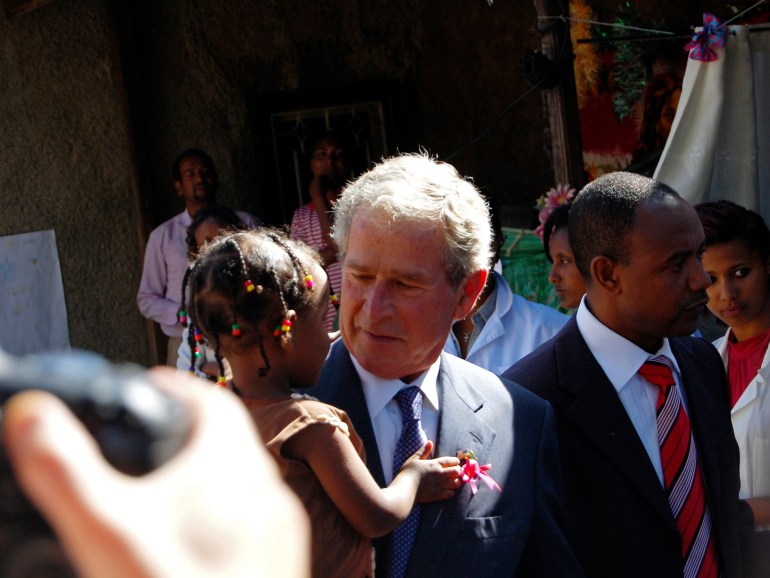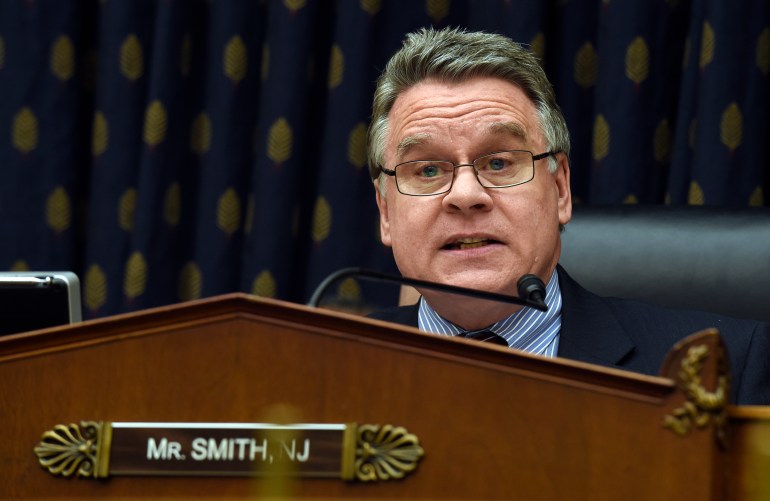For 20 years, this AIDS relief plan enjoyed broad US support. What changed?
For 20 years, this AIDS relief plan enjoyed broad US support. What changed? Al Jazeera English


PEPFAR Faces Uncertain Future as Congress Misses Deadline for Reauthorization
Washington, DC – The announcement caught many by surprise. It was 2003, and then-President George W Bush was standing before the United States Congress, laying out his goals for the upcoming year.
Budget cuts were high among them. “We must work together to fund only our most important priorities,” Bush, a Republican, told the packed chamber.
But then he dropped a bombshell: He called on Congress to approve $10bn in new spending to combat AIDS in Africa.
“Ladies and gentlemen, seldom has history offered a greater opportunity to do so much for so many,” he told the lawmakers, who rose to applaud the proposal.
That proposal ultimately became the President’s Emergency Plan for AIDS Relief, widely known as PEPFAR, one of the largest and most ambitious international health programmes in US history.

PEPFAR’s Importance and Bipartisan Support
For the last 20 years, PEPFAR has received broad bipartisan support. Every five years, it has been renewed without incident — until now.
On September 30, Congress missed the deadline to reauthorize PEPFAR, throwing its future in jeopardy.
Lawmakers and healthcare advocates fear misinformation and dysfunction in the Republican Party may further imperil PEPFAR’s life-saving mission, as Congress stares down its next budget deadline on November 17.
“We cannot play politics with assistance so vital for public health and human rights,” Representative Ilhan Omar, a Democrat, told Al Jazeera.
Concerns over Abortion
While Bush initially imagined PEPFAR would provide anti-retroviral drugs for at least 2 million people, the US State Department estimates 20 million have received treatment since the programme’s inception.
Overall, the administration of President Joe Biden said PEPFAR saved 25 million lives worldwide.
PEPFAR can continue operating at its current funding levels without congressional reauthorization, at least over the short term. But without approval, advocates warn the programme is vulnerable to being scaled back or cut entirely.
Already, Republicans are targeting the programme with funding holds, based on the allegation that its money could be used for abortion services.
“Regrettably, it has been reimagined, hijacked by the Biden administration to empower pro-abortion international non-governmental organisations,” one Republican representative, Chris Smith, told the House of Representatives in September.
PEPFAR’s proponents deny that allegation. “PEPFAR is legally prohibited from funding abortion services,” Keifer Buckingham, an advocacy director at the Open Society Foundations, told Al Jazeera.
She pointed to laws like the 1973 Helms Amendment, which restricts foreign assistance funds from being used for “abortion as family planning”.

An Emboldened Party
But critics say the Republican Party has been emboldened by the 2022 decision to overturn Roe v Wade, the Supreme Court case that guaranteed the federal right to abortion.
Since the decision was handed down, Republicans have tried to further roll back abortion access, in some cases stymying routine or unrelated legislation.
Senator Tommy Tuberville, for example, has refused to approve key military appointments — a standard congressional procedure — over concerns about a Pentagon policy that allows travel reimbursement for reproductive healthcare, including abortion.
In the case of PEPFAR, Republican critics have voiced concern that the Biden administration’s strategy documents mention coordinating with organisations that promote “reproductive health and rights”, though abortion itself is not explicitly mentioned.
Republicans have also denounced a separate 2021 decision to rescind the so-called Mexico City Policy, which barred federal funding from going to any organisations that even advised patients about abortion.
But PEPFAR’s proponents believe these concerns are misguided.
The current situation is “rather an unfortunate consequence of the far-right’s crusade against abortion rights and LGBTQI+ people here in the United States and around the world”, Buckingham said.
“A small minority of outside groups are spreading lies and harmful rhetoric to score political points.”
Join us, as fellow seekers of change, on a transformative journey at https://sdgtalks.ai/welcome, where you can become a member and actively contribute to shaping a brighter future.
 aljazeera.com
aljazeera.com








